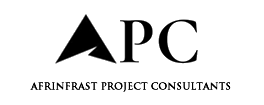
Simon Buckmaster, operations manager from James Hardie, explores the environmental performance of modern cladding solutions to ensure future-proof and safe solutions
In recent years, conversations about cladding have rightly been dominated by safety concerns following the Grenfell disaster and subsequent inquiry. The introduction of the Building Safety Act has heightened the focus, introducing new safety standards for certain buildings. However, as the construction industry evolves, another consideration emerges: sustainability.
From material choice to construction methods, manufacturing to recycling, sustainability matters more than ever in a sector —and indeed, a world —committed to reducing its impact. The decisions made today regarding the specified materials will have long-lasting impacts on both the environment and the communities we serve, which is why future-proofing buildings must start with smarter material choices.
When it comes to the external building fabric, specifiers have a wide range of choices, each with their own benefits. When it comes to environmentally responsible and high-performance façades, fibre cement offers a compelling case. Here are four reasons why.
Proven environmental performance
A key method to evaluate the sustainability of a construction product is through its Environmental Product Declaration (EPD), which provides independently verified data on a material’s environmental impact across its entire lifecycle, from production to end-of-life disposal.
These declarations provide assurance that the products meet high sustainability benchmarks, enabling architects and builders to compare materials fairly and accurately. Such data is increasingly important as the industry shifts towards more rigorous carbon reporting and green building certification requirements.
Increasingly, cladding products are backed by third-party verified EPDs, offering transparency and accountability for specifiers and developers. Furthermore, Global Warming Potential (GWP) is another element under increasing consideration.
Lean manufacturing
Sustainability begins not just with the product but also with how it’s made. Product design and innovation strategies must consider sustainability-related impacts and continually evolve to enhance environmental performance.
This includes prioritising opportunities to reduce waste, minimise resource use and promote the use of renewable energy throughout the manufacturing processes.
Fibre cement vs timber
Timber is traditionally seen as a sustainable option, offering an infinite resource, provided new trees are planted. However, it also comes with drawbacks that impact its long-term sustainability and maintenance burden.
Unlike timber, fibre cement does not require regular repainting or sealing to maintain its weather resistance and appearance. This not only reduces ongoing maintenance costs but also eliminates the need for paints that can emit volatile organic compounds (VOCs) into the environment over time.
In addition, fibre cement has limited combustibility, is dimensionally stable and resistant to rot, pests and moisture, offering long-term durability in a way that timber often can’t match. This durability translates to a longer lifecycle and fewer replacements.
Planning for the future
As Building Regulations evolve and the industry continues to prioritise decarbonisation, it’s clear that sustainability can no longer be an afterthought. It must be integrated into every stage of design and construction – and that starts with the materials we choose.
Fibre cement cladding provides a compelling solution; fire-resistant with limited combustibility, durable, low-maintenance and manufactured with the environment in mind. With EPDs to support responsible specification and product innovations supporting waste-conscious construction, the opportunity to build safer and greener has never been more accessible.
The post Mitigating impact: The role of sustainability in modern cladding solutions appeared first on Planning, Building & Construction Today.

